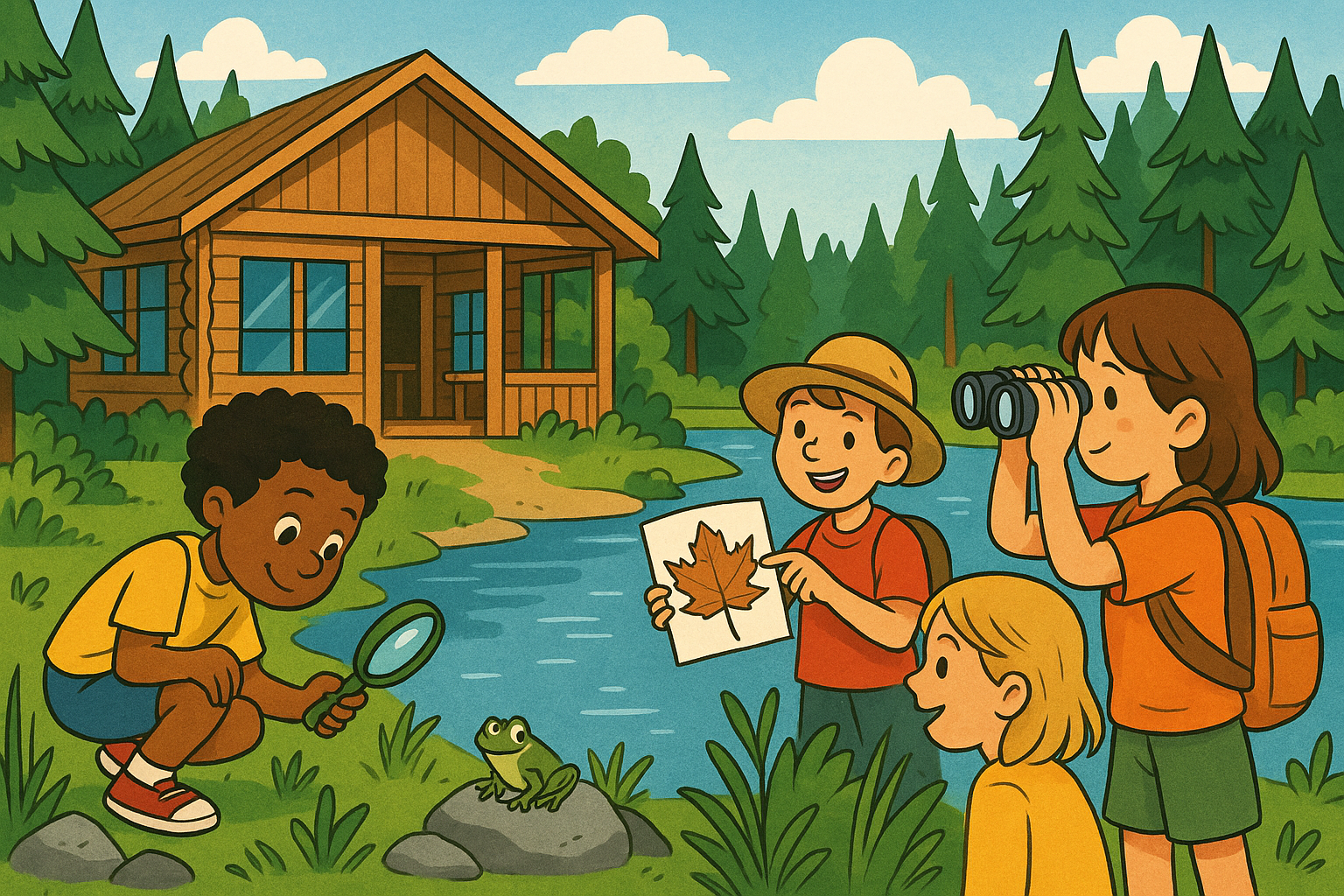🔎 Bug Detective Game
🎯 Target Skills
- Observation and focus
- Early science thinking
- Respect for living things
🧰 Materials
- Plastic magnifying glass
- Notebook or drawing pad
- Optional: bug guide
- Household alternatives: clear spoon, phone camera, sticky note pad, recycled paper
👣 Step-by-Step
- 🔍 Go outside and look under rocks, logs, leaves
- 🐞 Spot a bug? Say “Let’s observe quietly!”
- 🖍️ Ask your child to draw or describe the bug
- 📷 Snap a photo to look up more info later
- 📖 Talk about its color, legs, where it lives
- 💬 Encourage storytelling: “What’s this bug’s name?”
- 🧼 Remind to be gentle and always release the bug
- 📚 End with a bug book or bedtime story
🤗 Parent/Caregiver Guidance
Focus on curiosity over knowledge. Let your child lead the hunt. Say things like “You’re a real scientist!” or “I’ve never seen that bug before!”
🧠 Why This Helps
This activity teaches focus, empathy, and early classification—all with no pressure. Plus, kids learn that nature is full of tiny wonders worth protecting.
📚 Research Foundation
- Reggio Emilia: child-led exploration fosters inquiry
- STEM research: observing nature improves scientific reasoning (Eshach & Fried)
- Eco-literacy builds environmental empathy (Louv, 2005)
🪵 Nature Builders
🎯 Target Skills
- Creative thinking
- Fine motor coordination
- Spatial awareness
🧰 Materials
- Twigs, leaves, rocks, pinecones
- Flat building surface
- Household alternatives: cardboard box lid, baking sheet, garden tiles, picnic tray
👣 Step-by-Step
- 🪵 Collect natural materials together
- 🧱 Set up a building zone outdoors or by a window
- 🏗️ Challenge: “Can you build a bug house or a tiny fort?”
- 🤲 Let them arrange and rearrange the materials freely
- 🎨 Add drawing or decorating with chalk or sticks
- 💡 Try new ideas: bridges, tunnels, nests!
- 📸 Take a picture of their creation to remember it
- 🧹 Help clean up while keeping one piece as a keepsake
🤗 Parent/Caregiver Guidance
Let them lead, even if it “doesn’t make sense” to you. Ask open questions like “What do you think will happen if…?” Praise persistence, not perfection.
🧠 Why This Helps
Kids learn best by doing. Building with nature fuels imagination and teaches that even everyday objects can become magical tools with the right mindset.
📚 Research Foundation
- Montessori: real-world, hands-on learning
- Construction play builds math and spatial skills (Clements & Sarama)
- Nature play increases creativity and resilience (Gill, 2014)
💦 Water Explorers
🎯 Target Skills
- Cause and effect
- Motor planning
- Language and descriptive skills
🧰 Materials
- Buckets or bowls of water
- Cups, spoons, and natural items (stones, bark, leaves)
- Household alternatives: measuring cups, ladles, colanders, bath toys
👣 Step-by-Step
- 💧 Fill a few shallow containers with water outdoors
- 🪣 Add scooping tools and safe natural items
- 🗣️ Ask: “What sinks? What floats?”
- 🔄 Encourage pouring and transferring between containers
- 📏 Let them experiment: splash, stir, swirl!
- 🔤 Introduce new words: “slippery,” “bumpy,” “wet”
- 🧽 Use a sponge to show soaking and squeezing
- 🧼 End with a mini cleanup together
🤗 Parent/Caregiver Guidance
Lean into the mess! It’s part of the magic. Narrate their actions and model new ones. Use rich vocabulary to expand their language through play.
🧠 Why This Helps
Water play builds real-world problem-solving and introduces basic science. It’s also calming and sensory-rich, perfect for curious little minds and hands.
📚 Research Foundation
- Constructivist theory (Piaget): learning by experimenting
- Language development through sensory play (Vygotsky)
- Flow state helps emotional regulation (Nakamura & Csikszentmihalyi)
.svg)
